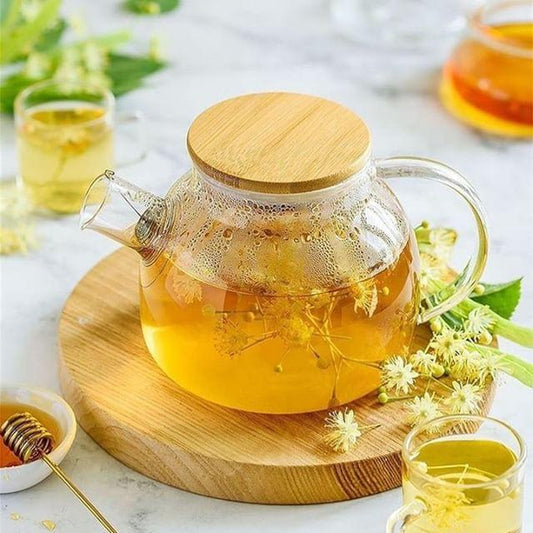Afternoon Tea Traditions Around the World

Afternoon tea is a cherished tradition that brings people together to enjoy delicious food and good company. While the concept of afternoon tea originated in Britain, it has been embraced and adapted by many cultures around the world. Each country has its unique take on this delightful practice, offering a variety of flavors, settings, and rituals. Here’s a look at afternoon tea traditions from different parts of the globe.
1. England: The Birthplace of Afternoon Tea
Historical Background:
- Afternoon tea in England dates back to the early 19th century, credited to Anna, the Duchess of Bedford, who began having tea and snacks to ward off hunger in the late afternoon. This practice soon became a social event among the British aristocracy.
Typical Spread:
- Traditional English afternoon tea includes a pot of freshly brewed tea, finger sandwiches, scones with clotted cream and jam, and an assortment of pastries and cakes. It’s often served on a tiered stand, with each level offering a different treat.
Setting:
- Afternoon tea is typically enjoyed in elegant settings such as tearooms, hotels, or at home with fine china and silverware, creating a refined and leisurely experience.
2. Japan: Matcha and Wagashi
Cultural Influence:
- In Japan, afternoon tea is influenced by the traditional tea ceremony, which focuses on the preparation and presentation of matcha, a powdered green tea. This ritual, known as chanoyu, emphasizes mindfulness and aesthetics.
Typical Spread:
- Japanese afternoon tea often includes matcha, served with wagashi, which are delicate and beautifully crafted sweets made from ingredients like rice flour, red bean paste, and fruit. The sweets are designed to complement the bitter taste of matcha.
Setting:
- Afternoon tea in Japan is usually enjoyed in serene and minimalist settings, often in traditional tea houses or gardens. The emphasis is on harmony and tranquility, reflecting the principles of Zen Buddhism.
3. Morocco: Mint Tea and Hospitality
Cultural Significance:
- In Morocco, tea is a symbol of hospitality and friendship. Moroccan mint tea, known as atay, is a blend of green tea, fresh mint leaves, and sugar. It’s traditionally prepared and poured from a height to create a frothy top.
Typical Spread:
- Alongside mint tea, Moroccans often serve a variety of pastries and sweets, such as almond-filled pastries, honey-soaked chebakia, and dates. Savory items like olives and nuts may also be included.
Setting:
- Moroccan tea is often enjoyed in beautifully decorated living rooms or courtyards, with guests seated on plush cushions. The tea is served in ornate silver teapots and glasses, adding to the opulent experience.
4. Russia: Samovars and Sweet Treats
Historical Background:
- Tea was introduced to Russia in the 17th century, and it quickly became an integral part of Russian culture. The samovar, a traditional tea kettle, is used to boil water and brew tea.
Typical Spread:
- Russian afternoon tea includes strong black tea, often sweetened with sugar or jam. Accompaniments include a variety of sweet treats such as blini (thin pancakes), pryaniki (spice cakes), and pirozhki (small filled pastries).
Setting:
- Afternoon tea in Russia is a warm and inviting affair, often enjoyed around a samovar with family and friends. The table is set with fine porcelain cups and plates, creating a cozy and hospitable atmosphere.
5. India: Chai and Spices
Cultural Influence:
- In India, chai is the preferred tea, made by brewing black tea with a mix of aromatic spices such as cardamom, cinnamon, ginger, and cloves. Milk and sugar are added to create a rich and flavorful beverage.
Typical Spread:
- Indian afternoon tea is often accompanied by savory snacks like samosas, pakoras (fried vegetable fritters), and sandwiches. Sweet treats such as jalebi (syrup-soaked fried dough) and ladoos (sweet balls made from flour and sugar) are also popular.
Setting:
- Chai is enjoyed in a variety of settings, from roadside tea stalls to elegant homes. The tea is typically served in small clay cups or glasses, adding to the rustic charm of the experience.
6. China: Gongfu Tea Ceremony
Historical Background:
- The Chinese Gongfu tea ceremony is a highly skilled and elaborate method of preparing and serving tea, focusing on the art of making tea rather than just the act of drinking it. It dates back to the Song Dynasty.
Typical Spread:
- Chinese afternoon tea includes a selection of fine teas, such as oolong, green, and black teas. Accompaniments may include delicate pastries, mooncakes, and fresh fruit.
Setting:
- The Gongfu tea ceremony is often performed in a traditional tea room with low tables and cushions. The tea is brewed in small teapots and served in tiny cups, allowing guests to savor the intricate flavors of the tea.
Conclusion
Afternoon tea is a beloved tradition that transcends cultural boundaries, offering a moment of relaxation and connection over a delightful spread of tea and treats. Whether it's the refined elegance of English tea, the serene mindfulness of Japanese matcha, or the warm hospitality of Moroccan mint tea, each tradition brings its unique charm and flavors. Exploring these diverse afternoon tea traditions can inspire you to incorporate new elements into your tea rituals, creating a rich and varied experience for you and your guests.
Share:





